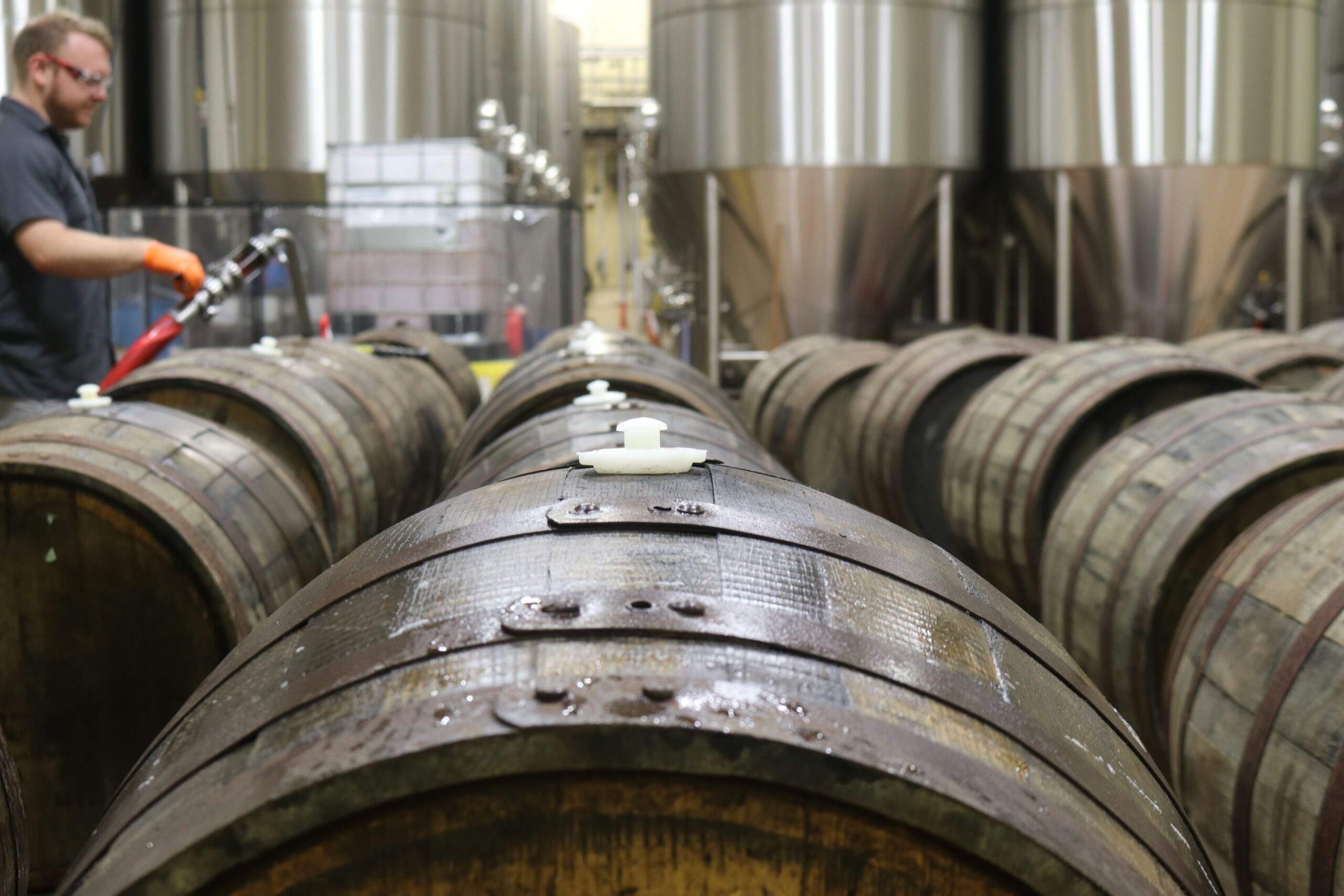The practice of ageing brown ales in oak casks has likely been around since soon after the introduction of hops to brewing, many centuries ago. Before hops were introduced, ale would soon oxidise to become malt vinegar. Adding hops allowed brewers to preserve beers longer, a crucial step in making them tradable commodities.
Beers stored in oak casks would still turn acidic, but this took some months and when it happened, the tang from lactic acid, produced by anaerobic bacteria called lactobacilli, was largely tasteless and odourless, making it much more acceptable.
Even since the advent of paler malts, most aged beers have remained brown, principally because in the right amounts the pairing of acidity with background caramel and dark malt flavours is more alluring.
Some variants do not see wood but instead get a light tang from the use of an open cooling vessel, with some exposure to ageing in steel, leaving them less complex.
The examples of oak-aged beers that survived the 20th century, mostly in the westernmost parts of Belgium, were typically aged for up to two years in temperature-controlled cellars, eventually being blended with fairly fresh beer of the same type to create a skilfully complex balance.
Flemish red (or Oud bruin)
The producers of aged brown and red-brown ales (5.5-7.0% ABV), from respectively East and West Flanders, have recently fixed on ‘Flemish Red’ as their preferred style name, before efforts are made to protect the style under EU law. These are sampling strength brown ales with a distinct lactic tang. Buttery caramel in the background is fine, as are light sherried notes, but any hint of vinegar should be barely perceptible. The beers are aged in an oak tun (foeder or foudre) for between six and twenty-four months, at which point the brewer or an expert blender will mix the contents of two or more together and prepare the beer for bottling. At this stage they are usually filtered, with sometimes and a small amount of unfermentable sugar being added. No yeast goes in the bottle, as its job is already done. One of the reasons to move on from the name Oud Bruin is that it is also the name given to a sweet, low alcohol, caramel beer in the Netherlands.
Other oak-aged ales
While a few oak-aged pale ales have been produced successfully, experience continues to suggest that it is sweet brown ales of sampling strength and darker beers of sipping strength that gain most from these efforts. More experienced brewers in the field suggest that for the most positive results oak-ageing needs to occur for no less than six months and usually no more than two years. One or two other heritage examples exist of blended beers featuring one aged in oak. Recent years have seen brewers in many countries experimenting in reviving the arts of ageing and blending, some going to extraordinary lengths to build up a stock of oak casks and learn the skills and pitfalls of this ancient craft.
Wood-aged ales
One of the common themes to the older arts of beer making, such as the deployment of microorganisms other than saccharomyces yeast in fermentation and conditioning, is that the phrase “not fully understood” crops up quite often. This has not stopped some brewers believing that if you pitch netted bags of wood chips into a beer for a few weeks, it will mimic oak-ageing, because some recent scientific paper said it did. Many tasters do not believe that is correct. For now, such beers are termed, by convention, wood-aged.
See also: Barrel-aged beers



